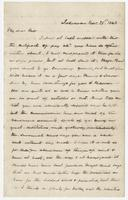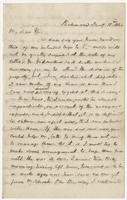My Feet Are Chained: Settler Colonialism and Mobility in the Florida Borderlands, 1812-1866
View
@ University of Mississippi Libraries
Rizzi, Christine Antoinette
Description
This project uses the framework of mobility to understand how settler colonialism functioned in a tri-racial southern borderland in the nineteenth-century. Nineteenth-century Florida constituted a borderland characterized by competition for land and resources among Seminole Indians, African Americans, and white Americans. White Americans regulated mobility, i.e. the physical movement of peoples, in order to privilege their own settlement in Florida, divest native peoples of their land, and enslave people of African descent. Beginning in 1812 and lasting through the first half of the 1860s, white Americans used legislation, the settlement of white families, the solidification of a slave system, and warfare against the Seminole Indians to Americanize the Florida peninsula by creating a white supremacist settler colony. Native and black peoples, however, used their own idiosyncratic forms of movement to resist americanization and the settler colonial system. The Civil War, itself a settler colonial war in Florida, witnessed the last gasp of the settler colonial system in Florida as slavery ended in 1865 and the Seminole Indians secured their authority in the state. White supremacy, however, would continue to reign in Florida through violence, white political control, and the rise of the tourism industry alongside Jim Crow segregation. The following project demonstrates the overriding importance of physical mobility to the process of national expansion and settlement, the persistence of borderland conflicts in the South after the colonial period, and the existence of a tri-racial South wherein native peoples wielded significant power and influence beyond the Removal Era.
Text
Application/Pdf
2019 01 01 T08:00:00 Z





















